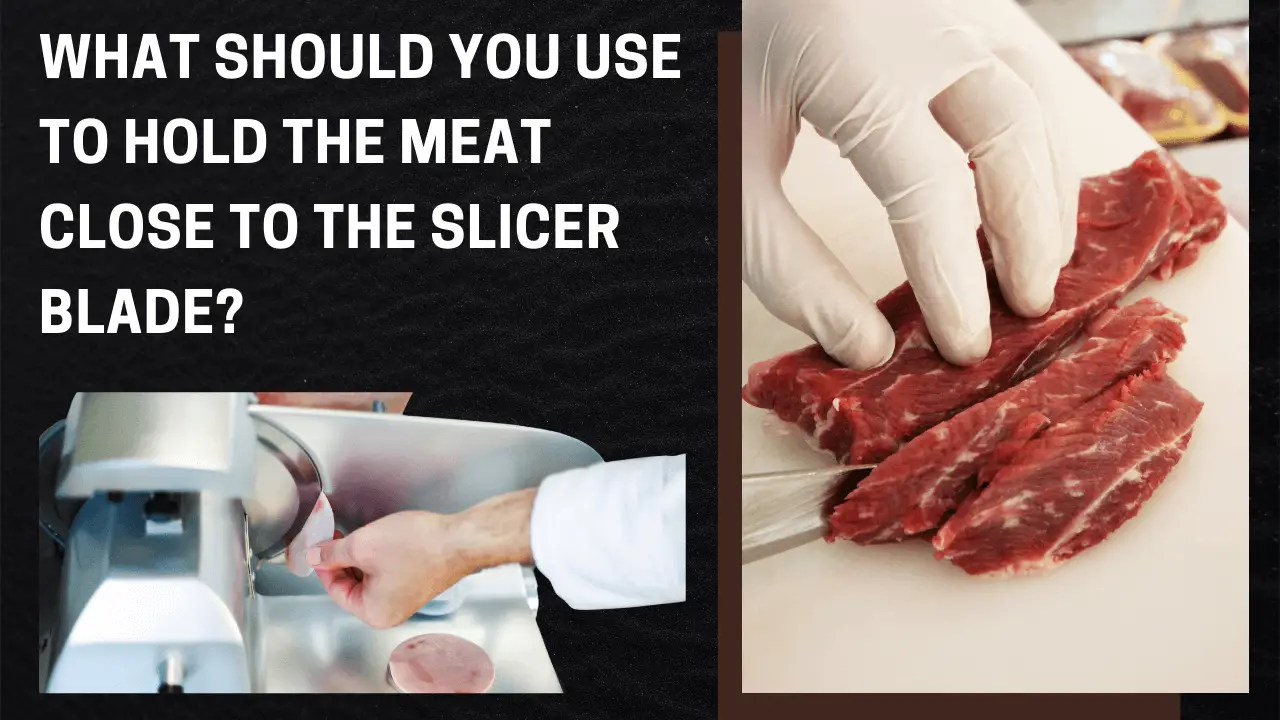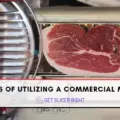When slicing cooked meat without a slicer, it is important to use the correct cutting technique. To ensure thin and even slices, you should trim away any excess fat from the outside of the meat. Always place the meat on a solid surface in a stable position and hold it firmly while using your other hand to slice it. Use a long, sharp knife, and make sure you’re slicing continuously for even slices. Slicing against the grain ensures that your sliced meat stays tender when cooked. This can be done by identifying the direction of the muscle fibers in the meat, which run perpendicular to the meat’s grain.
How To Slice Cooked Meat Thin Without A Slicer
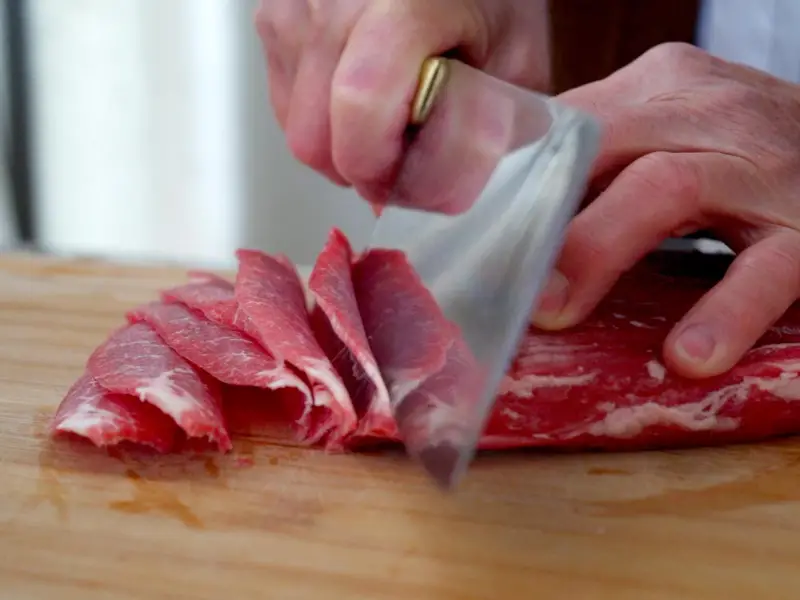
If you don’t have a meat slicer, slicing cooked meat thinly can seem impossible. But with the right techniques and tools, getting cooked meat without specialized possible d equipment is possible.
- Let The Meat Rest: It is important to allow the meat to cool before cutting it. You do not want to cut into hot, steaming meat, which can cause it to shred or tear.
- Grab A Sharp Knife: A sharp knife is essential for slicing cooked meat thin. Invest in a good-quality carving or chef’s knife with a comfortable handle that fits your hand and a razor-sharp blade.
- Secure The Meat: Before attempting to slice the meat with any manual cutting tools, securing the piece of cooked meat is important. This can be done by carefully pressing down on the top of the meat with a spatula or large fork before cutting it. Doing this will prevent the meat from slipping around, making it easier and safer to handle when slicing.
- Position Your Knife For A Cut Against The Grain: The key to slicing cooked meat thinly is to cut against the grain. To do this, you need to identify the direction of the grain in your piece of meat. This can be done by looking for long strands that run through it or feeling for them with your fingertips. Once you’ve found the grain, angle your knife slightly downward in the opposite direction of the grain.
- Slice: Once the cooked meat has cooled, it’s time to start slicing. Take a sharp knife and hold it parallel to the cutting board. Start at one end of the roast, pork chop, steak, or chicken breast, and press down as you slice through. Maintain even pressure while slicing to ensure that all slices are consistent in thickness. Depending on how thin you want to slice, you may need to repeat the process for each piece of meat.
- Shave: It is possible to shave the meat for even thinner slices. This technique will give you paper-thin slices that can be used in various dishes. Hold your knife at an angle and begin shaving off very thin slices from the end of the meat. Continue shaving until you achieve the desired thickness, applying even pressure each time.
How To Choose The Right Knife?
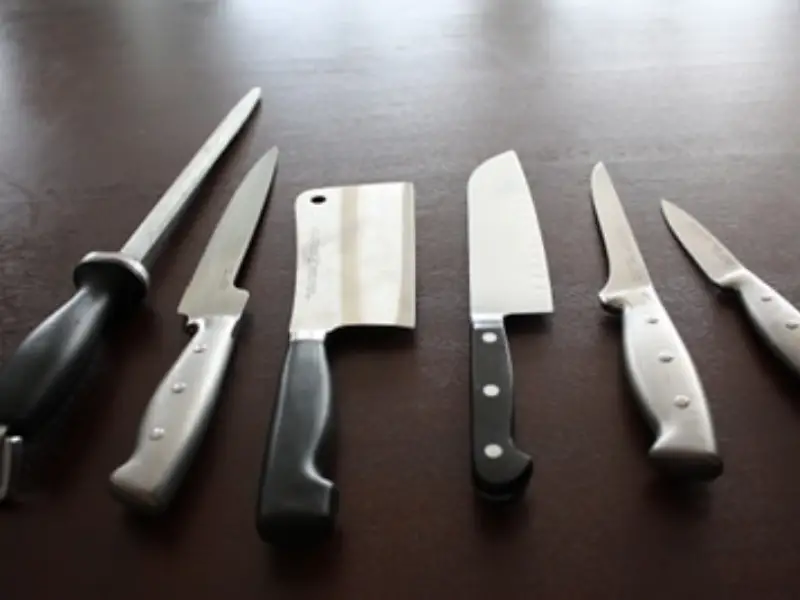
- A sharp blade is key to slicing cooked meat thin without a slicer. Look for a long, narrow knife with a pointed tip and a rigid, sturdy handle.
- The type of knife you use should be by the meat you are slicing. For example, if you’re slicing, use a chef’s knife for a roast, a chef’s knife for deli-style cold cuts, or a slicer or carving knife.
- Ensure your knife blade is made from high-quality steel and sharpened regularly to ensure the best results when slicing cooked meat thin without a slicer.
- Consider a serrated knife, like a bread knife, if you’re slicing thick pieces of cooked meat. The saw-like teeth will help you slice through the tough exterior more easily.
- Paring knives are also good for slicing thin pieces of cooked meat because they have narrow blades that can easily glide through food.
By following these tips, you will surely get the perfect slices of cooked meat without needing a slicer. Remember, a sharp blade and the right knife are essential. So take some time to choose your tool carefully, and you’ll be slicing like a pro.
How To Identify The Grain of The Meat?
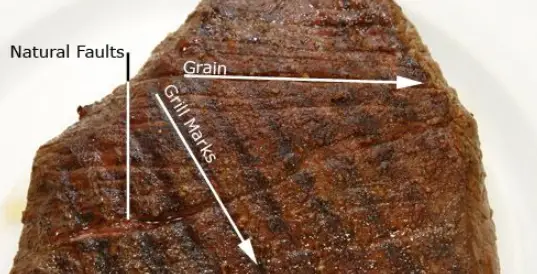
- Look closely at the surface of the cooked meat to identify the direction in which its fibers are running – this will indicate the meat’s grain.
- If you find it difficult to identify the grain visually, feel the texture of your cooked meat with your finger and rub lightly along each side until you can detect a pattern.
- Compare the direction of the grain with the four main orientations – horizontal, vertical, curved, and diagonal to identify which one it is closest to.
- Turn the meat over and repeat the process on the other side to ensure you correctly identified its grain.
How To Slice Raw Meat Without A Slicer?
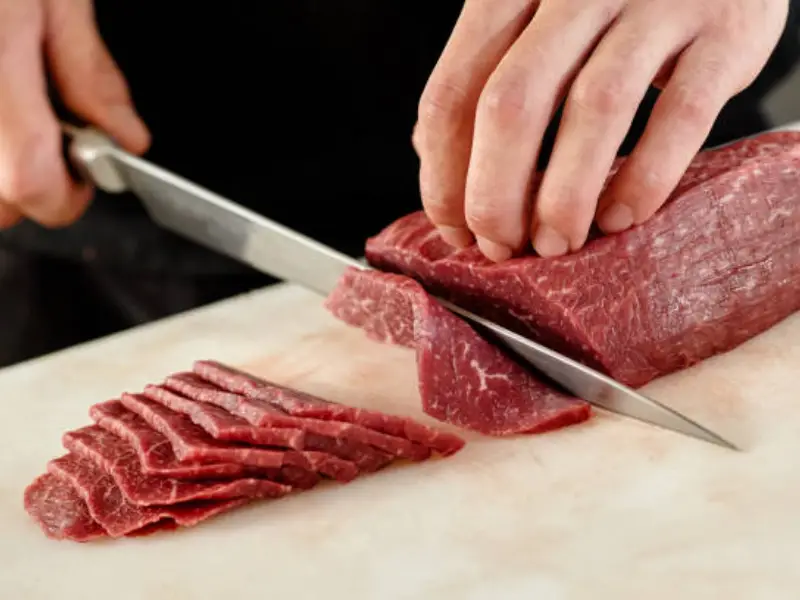
- Use a sharp knife: A sharp knife is the most important tool when slicing cooked or raw meat without a slicer. Choose a thin, long knife to make accurate, even slices.
- Place the meat on a cutting board: To ensure you get clean slices of meat, it’s important to have a stable surface. Place the meat on the cutting board and ensure it’s secensureat. It doesn’t matter, moile you slice.
- Cut against the grain: Before slicing, examine the direction of the muscle fibers in your piece of meat. Then, cut against them in thin, perpendicular slices. This will yield more tender pieces of meat.
- Use a sawing motion: A gentle sawing motion can help you make even thin slices when cutting meat without a slicer. Avoid pushing down too hard with your knife; instead, use the weight of the blade to guide it through the meat.
- Refrigerate the meat beforehand: Before slicing cooked or raw meat, place it in the refrigerator for an hour to make it easier to cut. This is especially helpful if you’re slicing a large piece of meat.
- Let the slices rest before serving: After slicing your cooked or raw meat, rest for five to ten minutes before serving. This will allow the meat to reabsorb its natural juices, making it even more tender.
Benefit Of Slicing Meat Thinly With Hands
- Slicing cooked meat with hands is easy and can be done quickly.
- When slicing, gauging the slices’ thickness is easier than using an electric slicer.
- This technique allows for more control and accuracy when ensuring all pieces are cut evenly in size and shape.
- It also prevents the meat from becoming smushed or bruised, which can ruin the overall texture of the dish.
- The surface area of each slice will be reduced by slicing thinly, meaning that more pieces can be made out of a given piece of meat. This helps to stretch food budgets and make meals go further.
- Also, slicing meat thinly with hands facilitates faster cooking times since thinner pieces of meat will take less time to heat through.
- Slicing cooked meat with hands can be a great skill to learn and master as it is a useful kitchen trick that can help home cooks create meals easily.
Common Mistakes To Avoid When Slicing Cooked Meat
- Using a dull knife: A sharp knife is essential for making clean, precise cuts. A dull knife can result in uneven slices and torn meat.
- Slicing too quickly: Take time when slicing to ensure even, thin slices. Rushing can lead to uneven cuts and a less appealing presentation.
- Not slicing against the grain: Slicing with the grain can produce tougher, chewier meat. Always slice against the grain for tender, easy-to-chew slices.
- Not allowing the meat to rest: Slicing meat immediately after cooking can cause the juices to run out, making the meat dry. Let the meat rest for at least 10 minutes to retain its juiciness.
- Using the wrong cutting board: A stable, non-slip cutting board is essential for safety and precision. Avoid using slippery or unstable cutting surfaces.
FAQs
Is it worth slicing your meat?
Yes, it is worth the effort to slice your meat instead of buying pre-sliced cuts. Doing so can be more economical as it allows you to purchase a larger piece of meat at a lower price and create smaller portions for individual meals. Additionally, slicing your meat offers you greater control over the size and thickness of each cut to create the perfect bite-size pieces for sandwiches, salads, and other dishes.
When should you slice meat with grain?
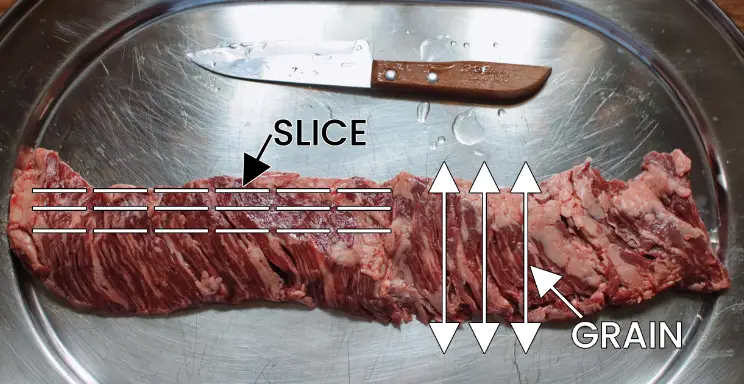
It is important to slice cooked meat with the grain of the muscle fibers. This will result in a better texture and more tender slices. When cutting against the grain, you’re likely to get tougher, chewy pieces. To identify which direction is with or against the grain, look for long fibrous lines running through the meat. Once you identify the direction of the grain, make sure your knife slices in the same direction.
Can you cut meat and cheese on the same slicer?
No, cutting meat and cheese on the same slicer is not recommended. Meat slicers come into contact with much raw food, making them prone to cross-contamination. If you use the same slicer for meat and cheese, you risk transferring harmful bacteria from the meat onto the cheese, which could make someone very ill. Therefore, it is best to have separate slicers for each type of food.
Can I slice meat thinly with a serrated knife?
No, it’s not recommended, as serrated knives can tear the meat and result in uneven slices. A sharp chef’s knife or carving knife is a better choice.
Conclusion
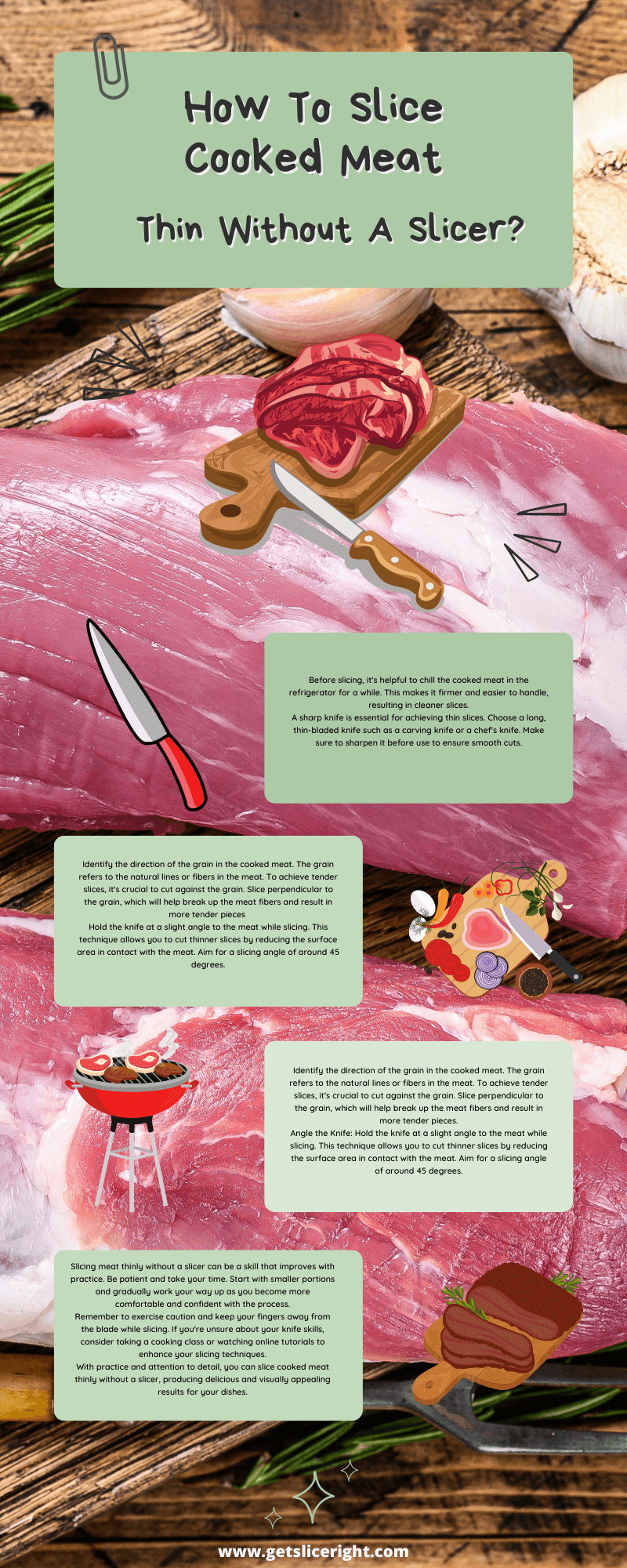
Slicing cooked meat into thin slices without a slicer is not as difficult as it seems. With the right knife, a sharp edge, and a steady hand, you can master the art of slicing even the toughest cuts of meat. If you take your time to ensure that your knife is kept very sharp and choose an appropriate cutting board surface, you can create perfect, thin slices of cooked meat without purchasing a separate slicer.

Mario Batali is a renowned author, food enthusiast, and passionate chef who has dedicated his life to exploring the world of culinary arts. With a love for sharing his knowledge and experiences, Mario has become a prominent figure in the food blogging community, inspiring countless readers with his creativity and expertise.
In addition to his culinary prowess, Mario Batali is also a talented writer with a flair for engaging storytelling. He launched his own food blog to share his recipes, cooking tips, and personal experiences in the kitchen. Over time, Mario’s blog gained a loyal following of food enthusiasts who appreciate his unique approach to cooking and his dedication to using only the finest ingredients.
Mario Batali’s passion for food and his commitment to sharing his knowledge with others have made him a true inspiration in the world of culinary arts. Through his blog, cookbooks, and public appearances, Mario continues to spread his love of food and the joy of cooking with his ever-growing fanbase.


